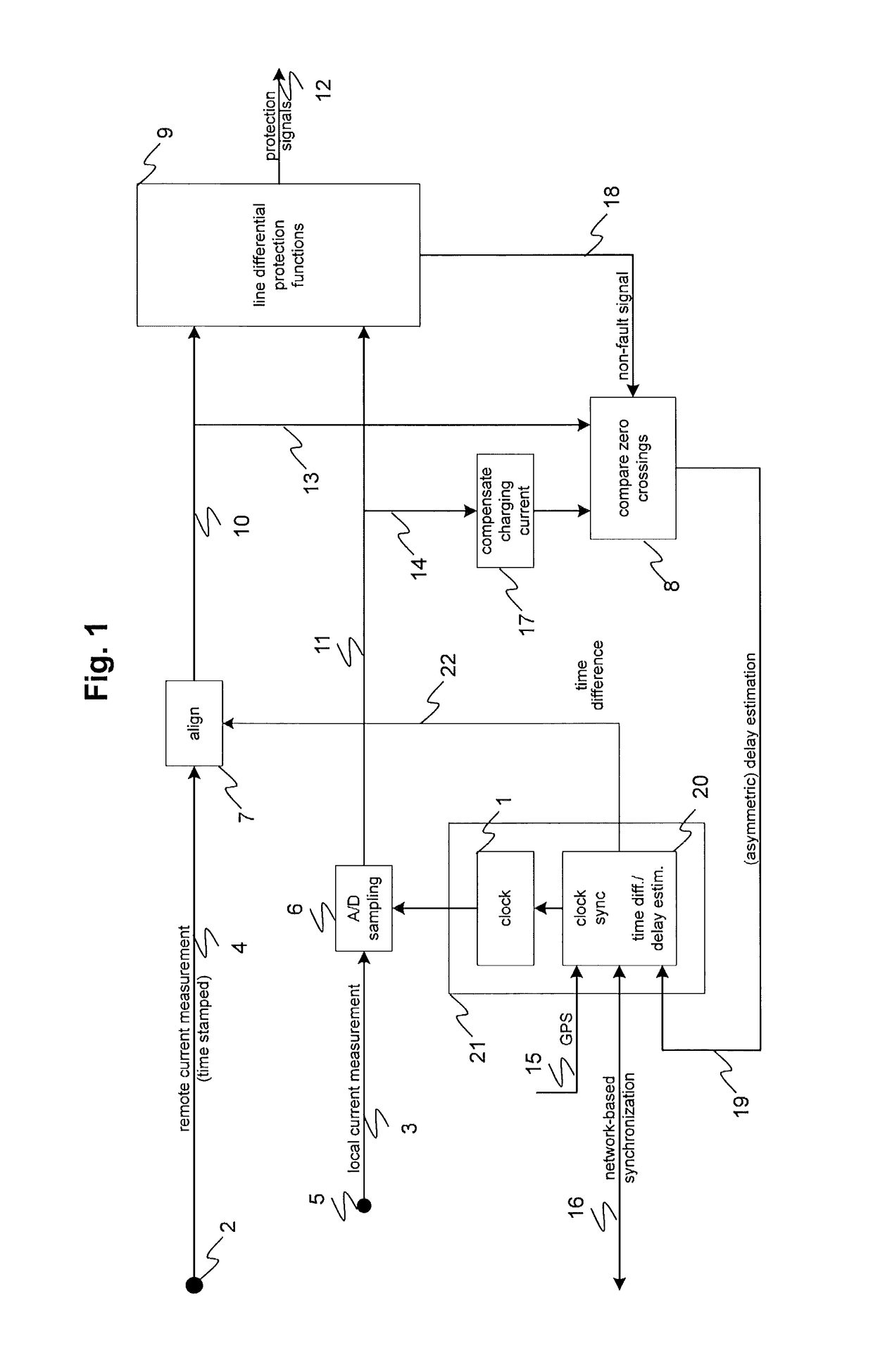Clock synchronization for line differential protection
a clock synchronization and line differential technology, applied in multiplex communication, fault response, instruments, etc., can solve the problems of costly, unreliable, and inability to always be reliable in synchronizing with a master clock, so as to reduce the determined clock offset
- Summary
- Abstract
- Description
- Claims
- Application Information
AI Technical Summary
Benefits of technology
Problems solved by technology
Method used
Image
Examples
Embodiment Construction
[0013]Exemplary embodiments of the present disclosure increase the reliability of protection systems for a power transmission line, for example, to improve clock synchronization of such a system.
[0014]Exemplary embodiments of the present disclosure provide a method and an arrangement for synchronizing clocks located at opposite ends of a power line.
[0015]According to an exemplary embodiment of the present disclosure, a first clock and a second clock located respectively at a first end and a second end of an AC power line are aligned according to an oscillating power line quantity such as a current, for example. The two clocks are initially synchronized to be within a period of a frequency of the power line quantity. In order to synchronize the clocks, a first representation such as a waveform of an oscillating power line quantity is produced by measuring the power line quantity at the first end of the power line. For example, the quantity can be measured or recorded with a sufficien...
PUM
 Login to View More
Login to View More Abstract
Description
Claims
Application Information
 Login to View More
Login to View More - R&D
- Intellectual Property
- Life Sciences
- Materials
- Tech Scout
- Unparalleled Data Quality
- Higher Quality Content
- 60% Fewer Hallucinations
Browse by: Latest US Patents, China's latest patents, Technical Efficacy Thesaurus, Application Domain, Technology Topic, Popular Technical Reports.
© 2025 PatSnap. All rights reserved.Legal|Privacy policy|Modern Slavery Act Transparency Statement|Sitemap|About US| Contact US: help@patsnap.com



